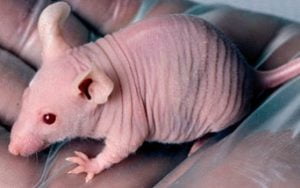Syngeneic Mouse Models for Oncology Research
Syngeneic mouse models (also known as allograft mouse tumor systems) differ from humanized ones by the origin of the cancer being monitored. In humanized models, cancer cells are taken directly from a human, while in syngeneic ones, the cancer cells are derived from mice or genetically similar rodents. Syngeneic mouse models are generated via transplantation or grafting procedure in which cells, tissues, or organs from one mouse are transplanted into another mouse. Syngeneic transplantation less prone to rejection and less dependent on immunosuppressive drugs.
As a result of the murine origin of cancers used in syngeneic models, the immune system of a mouse does not have to be impaired; the cells will be accepted by the host mouse. This allows for an environment nuanced with an immune system, helping researchers determine the side effects of a given anti-cancer drug in the context of a full immune response. However, the immune system of mice differs from that of humans, and hence the results of a drug may differ in each organism. This barrier to a realistic setting for tumor monitoring has been the subject of many developments over the past few decades, resulting in extensive efforts to make humanized mice with functioning human immune systems.

Syngeneic mouse models were used by early cancer researchers to determine the general efficiency of novel chemotherapies. Tumor growth was monitored in the presence of different chemicals, giving clues as to how various treatments were affecting generic tumor growth. Nowadays the models have become less relevant as the differences between mice and humans significantly affects the effectiveness of drugs.
Altogen Labs Syngeneic Mouse Models:
- 4T1 (Breast Cancer)
- CT26, MC38 (Colon Cancer)
- P338 (Leukemia)
- KLN 205 (Lung Cancer)
- A20, EL4 (Lymphoma)
- P815 (Mastocytoma)
- B16-F10 (Melanoma)
- Renca (Kidney Cancer)
Mouse strains available at Altogen Labs:
| Mouse type | T cells | B cells | NK cells | Coat | Other Notes |
| CD1 | No | Yes | Yes | White/albino | Outbred |
| B6 | Yes | Yes | Yes | White/albino | Inbred |
| Balb/c | No | Yes | Yes | Nude, albino | Inbred |
| Balb/SCID | No | No | Yes | White | Inbred |
| NOD/SCID | No | No | Impaired | White | Inbred |
| Nu/nu | No | Yes | Yes | Nude | Outbred |
| CD57BL | Yes | Yes | Yes | Dark brown/black | Inbred |
| CB17 | Yes | Yes | Yes | White | Inbred |
| NSG | No | No | No | White | Inbred |
| Swiss Nude | No | Yes | Yes | Nude | Outbred |
CD1
This model originates from a non-inbred Swiss stock of the 1920s from the Centre Anticancerux Romand (Lausanne, Switzerland). Outbred stocks are generally used for their genetic variability.
B6
This strain of mouse arose from a spontaneous mutation in the C57BL/6 strain resulting in a coisogenic albino mutant. These mice have a mutant tyrosinase gene.
Balb/c
This strain of nude mouse was developed in the 1980s through many crosses and backcrosses and remains to be an inbred model. Balb/c mice do not have a thymus and therefore cannot produce T-cells and are considered immunodeficient. Balb/c mice are often used for their easy breeding and similar weights (low-variation) of males and females. They are also used for monoclonal antibody production.
Balb/SCID
This mouse model lacks functioning T and B cells but do have functioning NK cells which limits engraftment. These mice are sensitive to irradiation and have functioning macrophages, dendritic cells and complement activity. Some cancer cell lines show improved engraftment over nude models in Balb/SCID mice.
NOD/SCID
The homozygous SCID mutation results in impaired T cell and B cell lymphocyte development. The NOD characteristic results in impaired natural killer cell function. NOD/SCID mice also lack macrophage and dendritic cell activity as well as reduced complement activity. These mice have a non-obese diabetic and insulitis background and low cytokine production. NOD/SCID mice exhibit a 36-week median survival due to the development of thymic lymphomas, which limits their use to short-term experiments.
Nu/nu
These mice originate from the National Institute of Health (NIH). Originally thought to be BALB/C congenic mice, once it was discovered that these mice were outbred they were determined to be of their own strain. These mice do not have a thymus, or T-cells, and are nude immunodeficient models.
CD57BL/6
This laboratory mouse strain was the 2nd mammalian species to ever have its genome published in entirety. They originate from the Bussey Institute for Research in Applied Biology in 1921. These mice are often selected for easy breeding and availability of congenic strains. These mice are particularly sensitive to odors, noise, pain, cold, alcohol and morphine addiction.
CB17
CB17 mice are of a congenic strain that carry the immunoglobulin heavy chain allele (Igh-1b) from a C57BL/Ka on a BALB/c background. They are an ideal control for the CB17/SCID immunodeficient mouse model
NSG
Also known as NOD scid gamma, these mice are deficient in NK, T and B cells as well as multiple cytokine pathways. They also have reduced dendritic cell function and defective macrophage activity and lack a complement system. They are one of the most immunodeficient models available and unlike NOD/SCID mice, NSG mice do not develop thymic lymphomas and can be used for long-term experiments.
Swiss Nude
These mice originate from the 1974 Gustave Roussy Institute (Villejuif, France) Swiss stock. They are T cell deficient, nude and albino.
